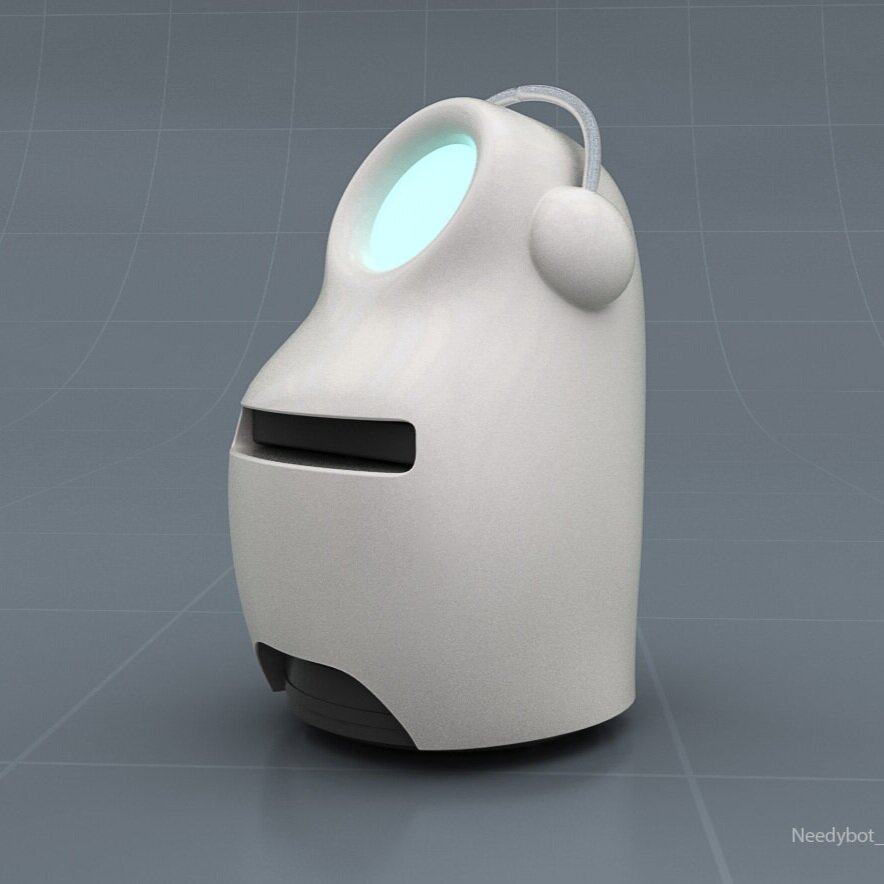
Needybot, Robots in the Workplace
Robots are synonymous with efficiency and mindless dedication to specific and often menial tasks. What would it be like if we had a robot that needed us, instead of helping us? We were curious how artificial intelligence might affect the future workplace, so we built an experimental robot to roam the halls of W+K to find out. Featured in Monocle.
Agency
Lodge, Wieden+Kennedy
Role
Physical Design, Voice Actor, UX/UI Designer
👀 Peep the Work 👀
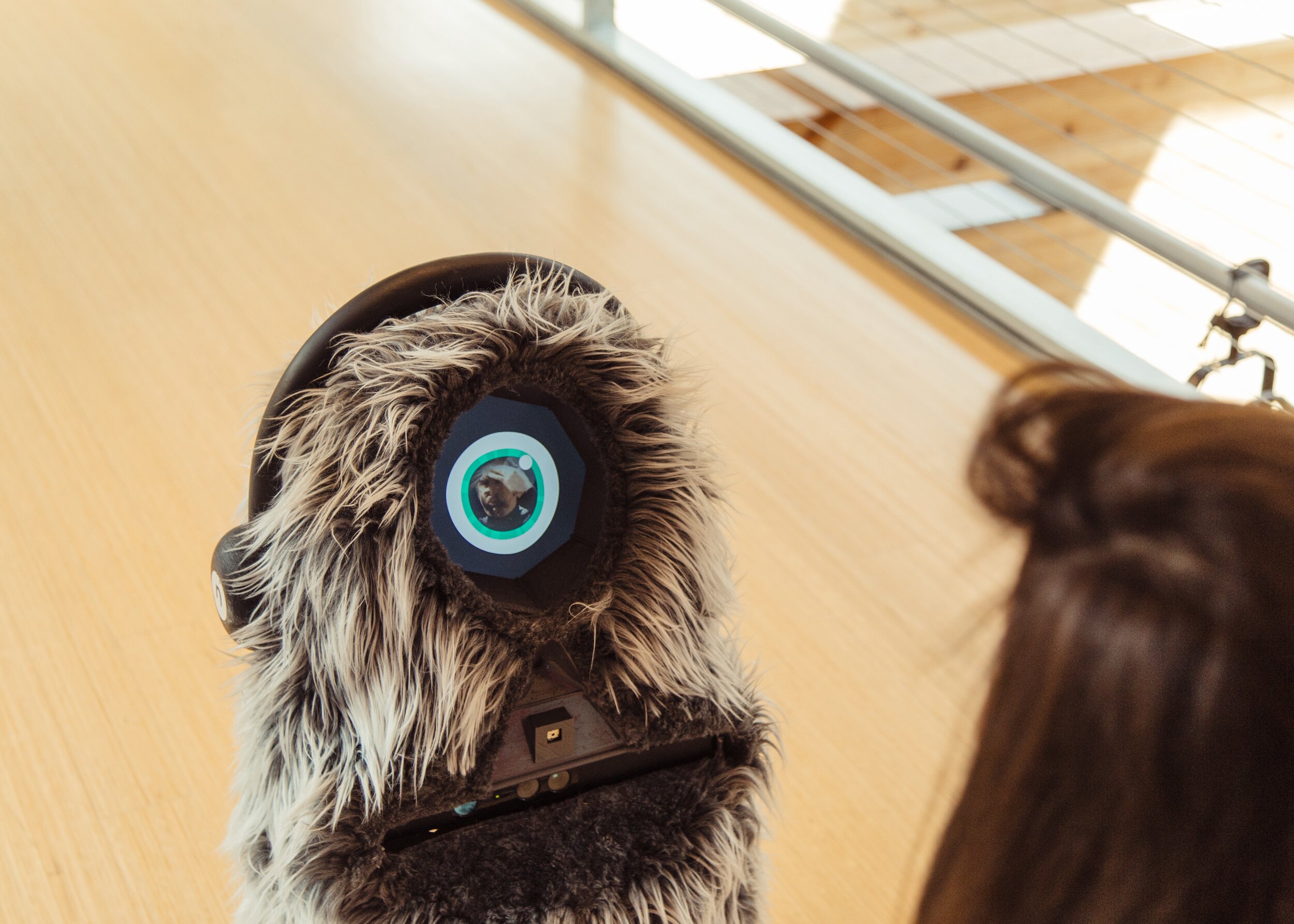
Needybot was designed to elicit empathetic responses in humans.
Always up for a challenge, we built a robot capable of expressing emotion, set it loose inside Wieden+Kennedy, and gave it a mission: autonomously navigate the five story office and seek human connection. The goal was simple—meet as many people as possible. This essentially required Needybot to befriend humans and rely on them to negotiate just about everything, including stairs, elevators, bullies, and dogs.
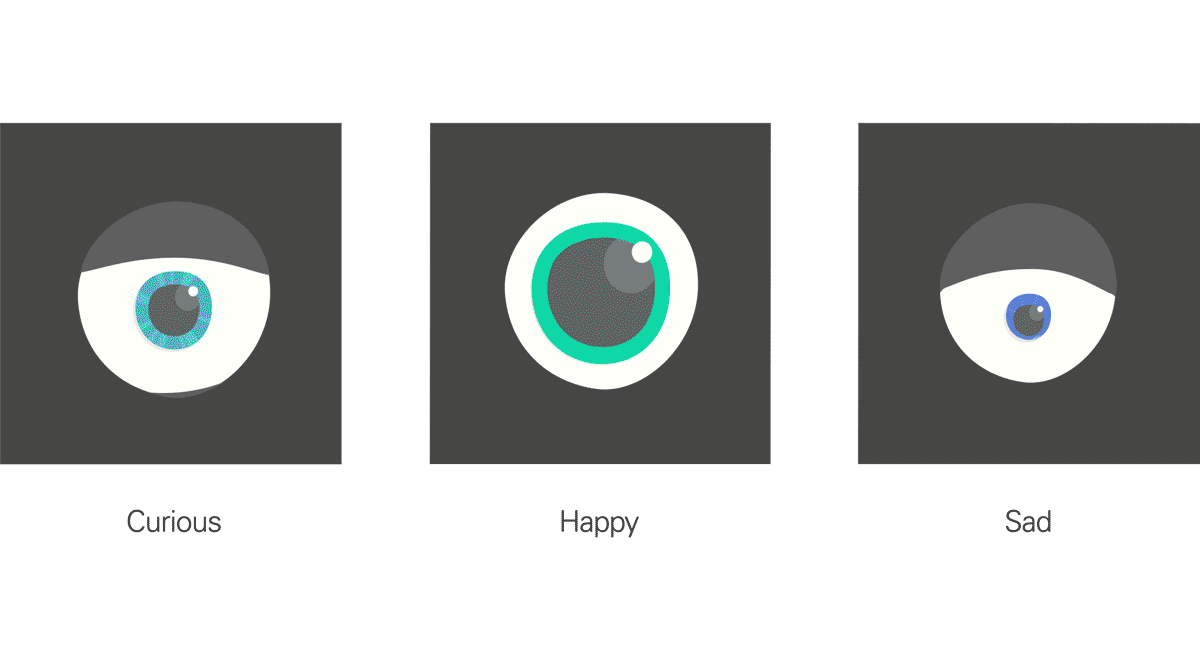
Needybot's main channel of communication was its eye.
Needy depended on being able to lure humans in from a hundred feet away, so we designed a large animated eye for it to use to communicate its emotional state and mood.
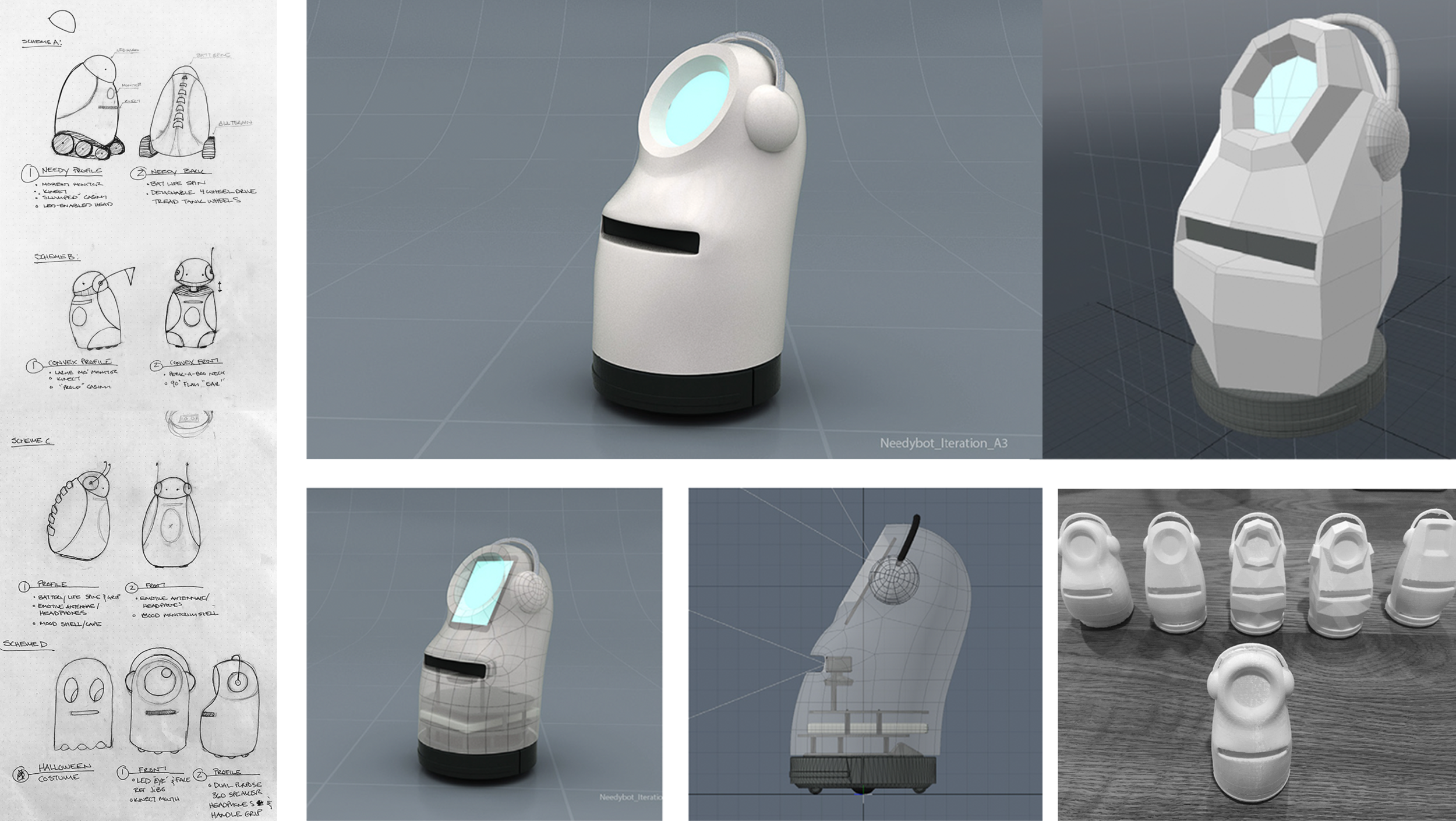
Building a bot on a small budget meant dreaming big before crafting an economized skeleton.
We investigated several concepts before settling on a polygonal version of our favorite concept—a form imbued with wonder and curiosity by leveraging a diminutive, furry frame as well as a large sympathetic eye and a child-like voice. Needybot was 3D printed “in house” with an Ultimaker at W+K.

Needybot’s internal components, while complex, were also economical. An infrared camera attached to the CPU via Raspberry PI was used to identify and follow humans (and sometimes dogs). Speakers encased within Needy’s dual purpose headphones/handle announced Needy's arrival, and the TurtleBot base was operated via ROS.
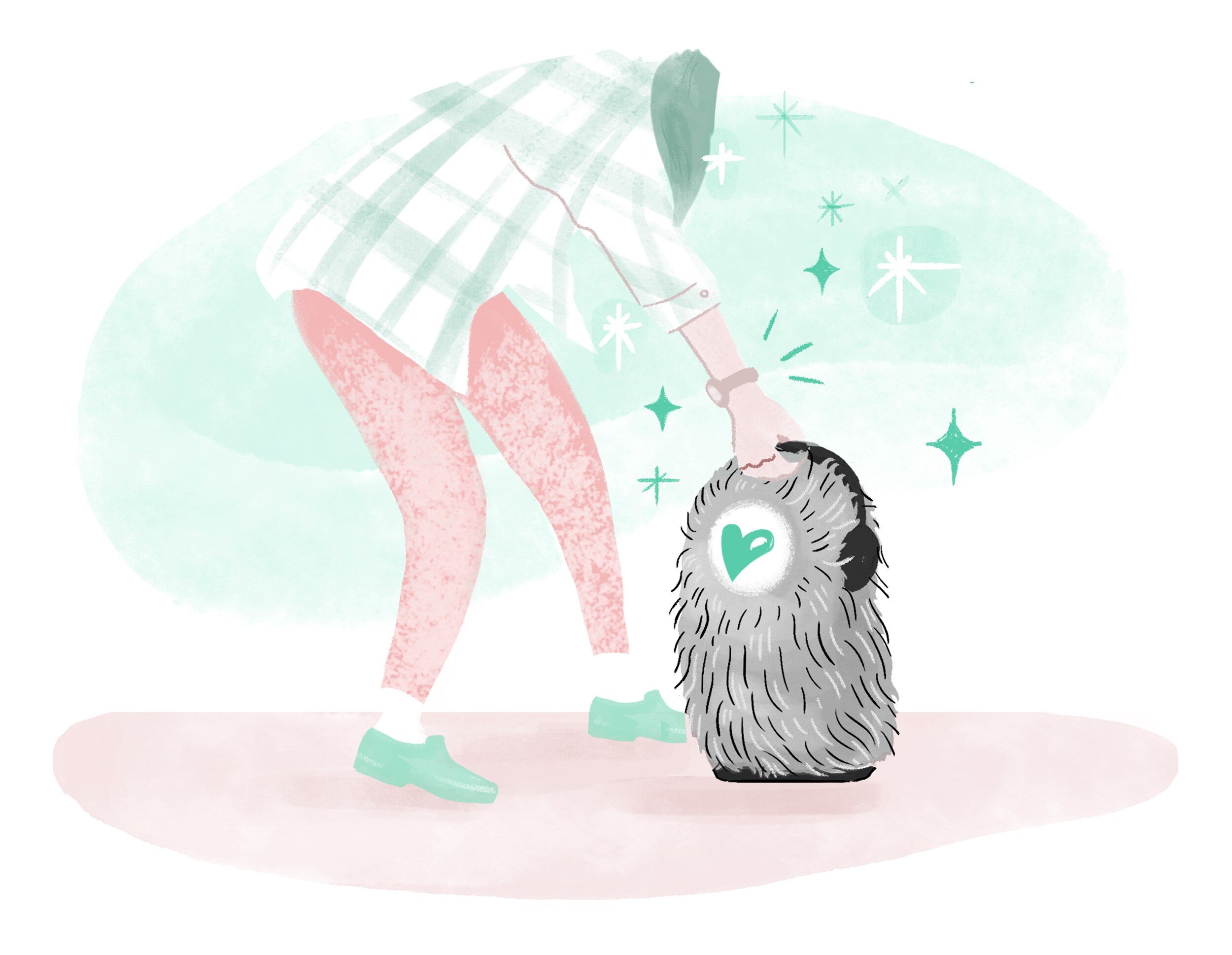
Needy’s mood influenced its interactions, which in turn influenced its mood.
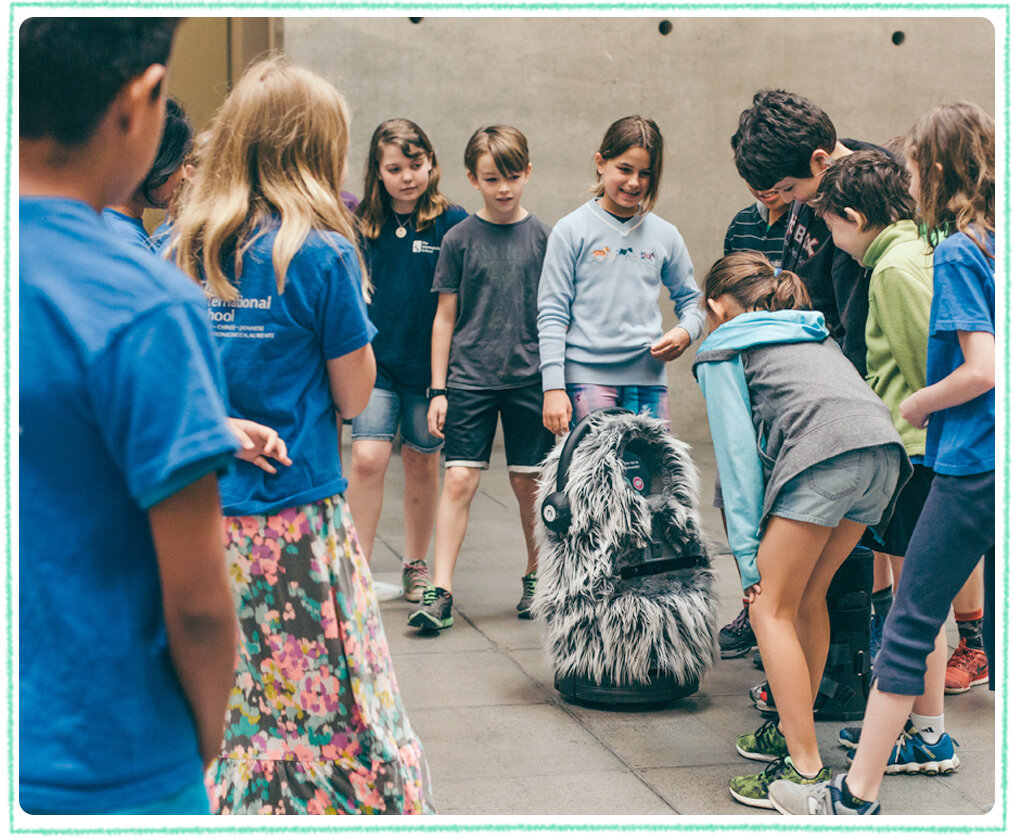
Parents and children empathized with Needybot more easily than others.
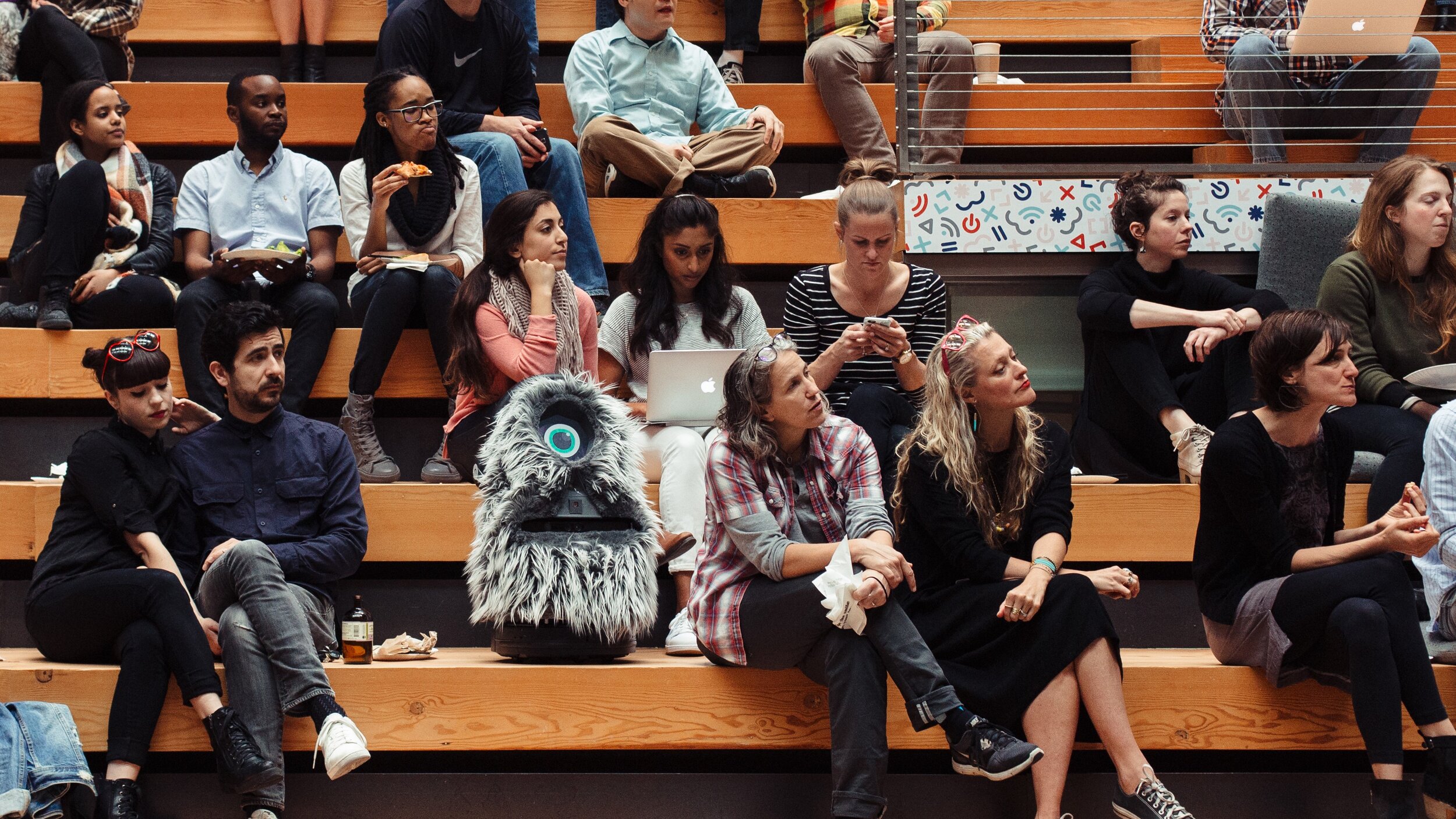
Needy Speaks
As the voice of Needybot, we wrote, recorded, and filtered over 2,000 audio clips to create Needybot's speech. To bring Needy to life we needed names, emotions, questions, desires, the whole gamut, including my voice acting chops. Using ROS, we triggered sequences that called for multiple clips to get stitched together, resulting in the artifice of speech.
